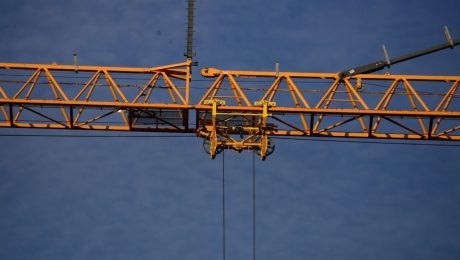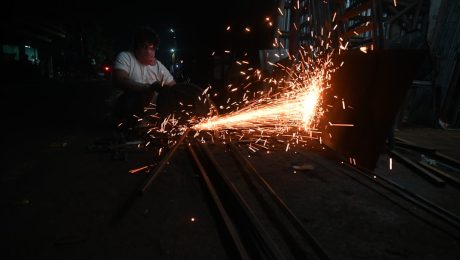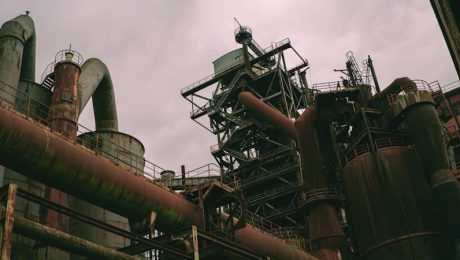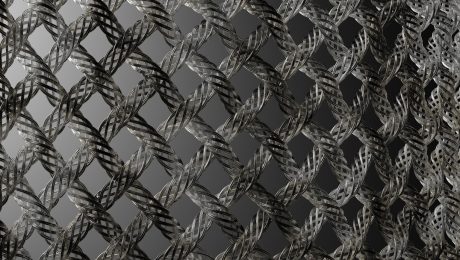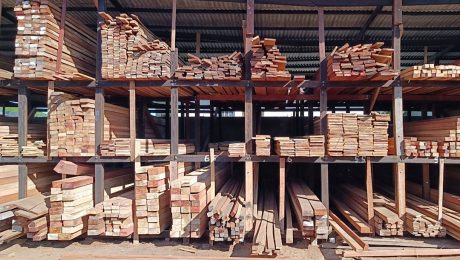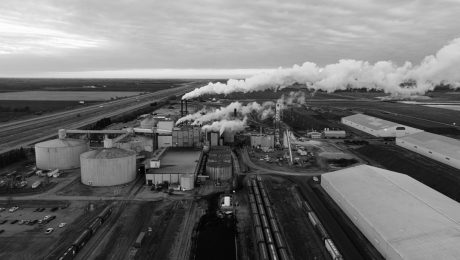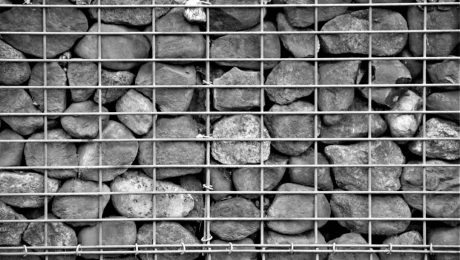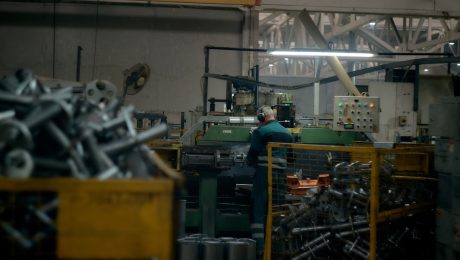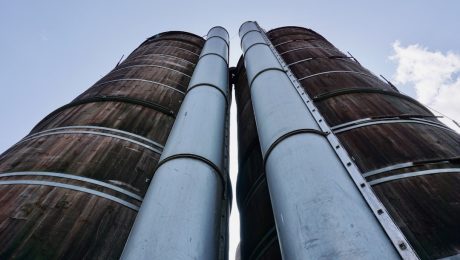High-strength steel (HEA) profiles are revolutionizing the construction and engineering industries, enabling the creation of lighter, stronger, and more efficient heavy load structures. This comprehensive guide delves into the key aspects of designing with HEA profiles, providing a detailed understanding of their properties, applications, and design considerations.
Understanding High-Strength Steel (HEA) Properties
HEA profiles are distinguished by their significantly higher yield strength compared to conventional structural steel grades. This elevated strength allows for the use of smaller sections to achieve the same load-bearing capacity, leading to reduced material consumption, weight savings, and potentially lower overall costs. Common HEA grades include S355, S460, and S690, each with its own specific yield and tensile strength characteristics. Understanding these properties is crucial for selecting the appropriate profile for a given application. Factors to consider include the intended load, environmental conditions (corrosion resistance), and fabrication requirements. Detailed material datasheets are essential for accurate design calculations.
Design Considerations for HEA Profiles in Heavy Load Structures
Designing with HEA profiles requires a nuanced approach compared to conventional steel design. While the higher strength offers advantages, it also introduces considerations related to buckling, local instability, and weldability. Finite element analysis (FEA) is often employed to accurately model the structural behavior under complex load scenarios. Design codes and standards, such as Eurocode 3 (EN 1993) or AISC 360, provide guidelines for the design of steel structures using HEA profiles, but careful attention to detail is essential. Proper detailing of connections is paramount to ensure the integrity of the entire structure. Overlooking these aspects can lead to structural failure.
Comparing HEA Profiles with Conventional Steel Sections
The choice between HEA profiles and conventional steel sections depends on several factors. While HEA profiles offer higher strength-to-weight ratios, they might be more expensive. The fabrication process can also be more complex due to the material’s higher strength, requiring specialized welding techniques and equipment. A thorough cost-benefit analysis is necessary, comparing the initial material cost, fabrication costs, and potential long-term savings in transportation and foundation design. In many cases, the reduced weight and smaller section size of HEA profiles result in significant overall cost savings, outweighing the higher initial material cost.
Applications of HEA Profiles in Heavy Load Structures
HEA profiles find widespread application in various heavy load structures, including:
- Bridges: Their high strength-to-weight ratio makes them ideal for long-span bridges, reducing the overall weight and improving structural efficiency.
- High-rise buildings: HEA profiles contribute to the construction of taller and more slender buildings by enabling the use of smaller columns and beams.
- Offshore structures: Their resistance to corrosion and high strength make them suitable for demanding offshore environments.
- Industrial structures: HEA profiles are used in heavy industrial applications such as cranes, storage facilities, and manufacturing plants.
- Transportation infrastructure: They are used in railway bridges, elevated roadways, and other large-scale transportation projects.
Advanced Analysis Techniques for HEA Profile Design
Due to the complex stress distributions and potential for local buckling in HEA profiles, advanced analysis techniques are often necessary to ensure structural integrity. Nonlinear finite element analysis (FEA) allows for accurate prediction of the structural behavior under various loading conditions, taking into account material nonlinearity and geometric imperfections. This detailed analysis helps optimize the design, minimizing material usage while ensuring sufficient safety factors. Furthermore, understanding and accounting for residual stresses from the manufacturing process is crucial for accurate simulations. Software packages specifically designed for structural analysis are commonly used for these complex calculations.
In conclusion, HEA profiles offer significant advantages in the design of heavy load structures. By understanding their properties, design considerations, and appropriate analysis techniques, engineers can leverage their superior strength and efficiency to create innovative and sustainable structures. However, careful planning and attention to detail are crucial to ensure the safe and reliable performance of these structures.
Tags: HEA profiles, high strength steel, structural design, heavy load structures, steel construction
body {
font-family: sans-serif;
line-height: 1.6;
}
h1, h2, h3 {
color: #333;
}
h1 {
font-size: 2.5em;
}
h2 {
font-size: 2em;
}
h3 {
font-size: 1.5em;
}
At GloballSteel, quality isn’t just a department; it’s the very foundation of our operations. We understand that the strength of our business rests on the unwavering quality of our steel products and the trust we build with our clients. This commitment is reflected in our comprehensive Quality Management System (QMS), designed to deliver superior steel, consistently and reliably.
ISO 9001 Certification: The Hallmark of Quality
Our dedication to quality is formally recognized through our ISO 9001:2015 certification. This internationally recognized standard demonstrates our adherence to a robust framework encompassing all aspects of our operations, from raw material sourcing to final product delivery. The certification process involved a rigorous audit of our processes, ensuring compliance with stringent quality standards. Achieving and maintaining this certification is not merely a badge of honor; it’s a testament to our ongoing commitment to meeting and exceeding customer expectations.
This certification covers all aspects of our business, including:
- Raw Material Procurement: Rigorous testing and selection of high-quality raw materials.
- Manufacturing Processes: Precise control over every stage of the manufacturing process, ensuring consistency and precision.
- Quality Control: Multiple checkpoints throughout the production process to identify and rectify any deviations from established standards.
- Product Delivery: Safe and timely delivery of products that meet or exceed customer specifications.
- Customer Service: Proactive communication and responsive support to address customer queries and concerns.
Stringent Quality Control Measures: From Ore to Order
Our QMS incorporates a multi-layered approach to quality control. Starting with the selection of raw materials, we employ advanced testing methods to ensure the purity and consistency of our inputs. Throughout the manufacturing process, our skilled technicians utilize state-of-the-art equipment and meticulously follow established procedures. Regular audits and inspections are conducted at each stage to identify and address any potential problems promptly.
Specific quality control measures include:
- Chemical Analysis: Regular chemical analysis of raw materials and finished products to ensure they meet specified compositions.
- Mechanical Testing: Rigorous mechanical testing, including tensile strength, yield strength, and elongation tests, to verify the structural integrity of the steel.
- Dimensional Inspection: Precise measurements to ensure the dimensions of the finished products meet customer specifications.
- Non-Destructive Testing (NDT): Employing advanced NDT techniques like ultrasonic testing and radiographic testing to detect internal flaws.
- Statistical Process Control (SPC): Utilizing statistical methods to monitor and control manufacturing processes, minimizing variations and maximizing consistency.
Continuous Improvement: The Driving Force of Excellence
At GloballSteel, we believe that quality is a journey, not a destination. Our QMS is designed to foster a culture of continuous improvement. We regularly review our processes, identify areas for improvement, and implement corrective and preventive actions. This commitment is driven by data analysis, employee feedback, and a proactive approach to problem-solving. We utilize Lean methodologies and Kaizen events to streamline processes and eliminate waste.
Our continuous improvement initiatives include:
- Regular Internal Audits: Conducting regular internal audits to identify weaknesses and areas for improvement in our QMS.
- Management Reviews: Regular management reviews to assess the effectiveness of the QMS and identify strategic opportunities for improvement.
- Employee Training: Providing comprehensive training to our employees to ensure they have the knowledge and skills necessary to maintain high quality standards.
- Customer Feedback: Actively soliciting and analyzing customer feedback to identify areas where we can improve our products and services.
- Technological Advancements: Investing in the latest technologies and equipment to enhance our manufacturing processes and improve quality.
Supply Chain Management: Ensuring Quality from Source to Delivery
Our commitment to quality extends beyond our manufacturing facilities. We carefully select and manage our suppliers to ensure that all raw materials and components meet our stringent quality standards. We maintain close relationships with our suppliers, regularly auditing their facilities and processes to ensure compliance with our requirements. This collaborative approach ensures the consistent delivery of high-quality materials, contributing to the overall quality of our finished products.
Our supply chain management practices include:
- Supplier Audits: Regular audits of our suppliers to ensure they meet our quality standards.
- Material Traceability: Maintaining complete traceability of materials from source to finished product.
- Supplier Performance Monitoring: Continuously monitoring supplier performance to identify and address any issues promptly.
- Collaborative Partnerships: Building strong relationships with our suppliers based on mutual trust and collaboration.
- Risk Management: Implementing risk management strategies to mitigate potential disruptions to our supply chain.
Customer Satisfaction: The Ultimate Measure of Success
Ultimately, the success of our QMS is measured by our customers’ satisfaction. We strive to provide our clients with high-quality steel products that meet their specific needs and exceed their expectations. We are committed to building long-term relationships with our customers based on trust, reliability, and a shared commitment to excellence. Open communication, responsive service, and a dedication to resolving any issues promptly are integral to our customer-centric approach.
At GloballSteel, quality is not just a goal; it’s a commitment that permeates every aspect of our business. We are constantly striving to improve our processes, enhance our products, and exceed the expectations of our valued customers.
Tags: GloballSteel, Quality Management System, QMS, ISO 9001, Steel Quality, Steel Manufacturing
Oil refineries are complex and demanding environments, operating under extreme conditions of high pressure, temperature, and exposure to corrosive chemicals. At the heart of this intricate network lies a crucial component: steel pipes. These seemingly simple structures are the arteries of the refinery, transporting vital fluids and gases throughout the processing stages. Understanding the critical role of steel pipes in oil refineries is key to appreciating the safety, efficiency, and overall functionality of these industrial giants.
Diverse Applications of Steel Pipes in Refineries
Steel pipes are used extensively throughout the refinery process, each application demanding specific properties and materials. They are crucial for transporting crude oil from storage tanks to processing units, carrying intermediate products between different stages of refining, and delivering finished products such as gasoline, diesel, and jet fuel to storage and distribution points. Specific applications include:
- Crude Oil Transfer Lines: These large-diameter pipes handle the initial influx of crude oil, often at high temperatures and pressures. They require robust construction and excellent resistance to corrosion.
- Process Piping: Smaller diameter pipes are used in the intricate network of processing units, carrying various hydrocarbons, catalysts, and other chemicals under diverse conditions. The choice of steel grade depends heavily on the specific fluid and process parameters.
- Steam and Water Lines: High-pressure steam and water are essential for heating and cooling processes within the refinery. Pipes used for these applications must withstand high temperatures and pressures, and be resistant to scaling and corrosion.
- Fuel Gas Distribution: Fuel gas, a byproduct of the refining process, is used to power various refinery operations. The pipes transporting this fuel must be leak-proof and designed to handle potentially explosive mixtures.
- Instrument Air Lines: Compressed air is used for instrumentation and control systems. These lines require high-quality pipes to ensure reliable operation and prevent contamination.
Stringent Material Requirements and Specifications
The demanding conditions within oil refineries necessitate the use of high-quality steel pipes that meet stringent specifications. The choice of steel grade depends on several factors, including pressure, temperature, fluid compatibility, and the presence of corrosive agents. Commonly used steel grades include:
- Carbon Steel: A cost-effective option for many applications, carbon steel pipes offer good strength and weldability. However, their corrosion resistance might be limited, requiring additional protective coatings in certain environments.
- Alloy Steel: Alloy steels, containing elements like chromium, molybdenum, and nickel, provide enhanced strength, corrosion resistance, and high-temperature capabilities. They are often preferred for high-pressure and high-temperature applications.
- Stainless Steel: Stainless steel pipes offer exceptional corrosion resistance, making them ideal for handling corrosive fluids and operating in harsh environments. They are often used in applications involving sour gas (gas containing hydrogen sulfide).
These pipes must also adhere to stringent industry standards, such as ASME (American Society of Mechanical Engineers) and API (American Petroleum Institute) specifications, ensuring consistent quality and performance.
Ensuring Safety and Preventing Catastrophic Failures
Safety is paramount in oil refineries. Pipe failures can lead to catastrophic consequences, including fires, explosions, and environmental damage. Therefore, regular inspection, maintenance, and rigorous quality control are essential. This includes:
- Non-Destructive Testing (NDT): Techniques like radiography, ultrasonic testing, and magnetic particle inspection are used to detect flaws in the pipes before they become critical.
- Regular Inspections: Visual inspections, pressure testing, and leak detection are performed routinely to identify potential problems early on.
- Corrosion Prevention: Protective coatings, such as painting, lining, and cathodic protection, are applied to extend the lifespan of the pipes and prevent corrosion.
- Emergency Shutdown Systems: Sophisticated systems are in place to automatically shut down processes in case of leaks or other emergencies.
The implementation of strict safety protocols and diligent maintenance practices are crucial for minimizing risks and preventing accidents.
Advanced Materials and Technologies in Refinery Piping
The oil and gas industry is constantly evolving, and so is the technology used in refinery piping. Recent advancements include:
- High-Strength Steels: New alloys are being developed to offer even greater strength and resistance to corrosion, allowing for the use of smaller diameter pipes and reducing material costs.
- Advanced Coatings: Innovative coatings provide superior corrosion protection and extend the lifespan of the pipes, reducing maintenance needs and downtime.
- Smart Pipes: Sensors and data analytics are being integrated into pipe systems to monitor pressure, temperature, and other parameters in real-time, enabling predictive maintenance and early detection of potential problems.
- Composite Pipes: In specific applications, composite materials are being explored as an alternative to steel, offering lightweight and corrosion-resistant solutions.
These technological advancements contribute to improved safety, efficiency, and environmental sustainability within oil refineries.
The Future of Steel Pipes in Oil Refineries
Steel pipes will continue to play a vital role in oil refineries for the foreseeable future, albeit with continuous advancements in materials and technologies. The focus will remain on enhancing safety, increasing efficiency, and minimizing environmental impact. The adoption of smart technologies, advanced materials, and improved maintenance practices will ensure the continued reliability and longevity of these crucial components in the complex world of oil refining.
Tags: steel pipes, oil refinery, refinery pipes, pipeline, oil and gas
The world of steel manufacturing is undergoing a significant transformation, driven by the incredible potential of nanotechnology. No longer are we limited by the inherent properties of steel; nanotechnological advancements are allowing us to manipulate steel surfaces at the atomic level, creating materials with enhanced performance and durability. This post delves into the exciting world of nanotech in steel surface treatments, exploring the various techniques and their remarkable benefits.
1. Enhancing Corrosion Resistance with Nanocoatings
Corrosion is a major concern in the steel industry, leading to significant economic losses and safety hazards. Traditional methods of corrosion protection often involve bulky coatings that can be expensive and less effective in the long run. Nanotechnology offers a superior solution through the application of nanocoatings. These coatings, typically composed of nanoparticles of materials like titanium dioxide (TiO2), zinc oxide (ZnO), or silicon dioxide (SiO2), are significantly thinner yet offer superior protection. The small size of the nanoparticles allows them to fill microscopic pores and crevices on the steel surface, creating a dense, impermeable barrier against corrosive agents like water and oxygen. Furthermore, some nanocoatings possess self-healing properties, further enhancing their longevity and effectiveness. The incorporation of nanoparticles with specific catalytic properties can also accelerate the formation of a protective passive layer on the steel surface, further mitigating corrosion.
2. Boosting Durability and Wear Resistance with Nanoparticle Reinforcement
Steel’s inherent strength can be further amplified through the incorporation of nanoparticles during the surface treatment process. Techniques like laser surface melting and thermal spraying can be used to embed nanoparticles of materials such as carbides, nitrides, or oxides into the steel surface. These nanoparticles act as reinforcement agents, significantly increasing the hardness, wear resistance, and fatigue strength of the steel. This is particularly beneficial in applications where the steel is subjected to high levels of wear and tear, such as in engine components, cutting tools, and construction machinery. The enhanced durability translates to a longer lifespan for these components, reducing maintenance costs and downtime.
3. Improving Surface Properties with Nano-Structured Layers
Beyond simply adding nanoparticles, nanotechnology enables the creation of nano-structured layers on steel surfaces with tailored properties. Techniques like pulsed laser deposition (PLD) and atomic layer deposition (ALD) allow for the precise control of layer thickness and composition at the nanoscale. This allows for the creation of surfaces with specific functionalities, such as enhanced lubricity, hydrophobicity (water repellency), or even antibacterial properties. For instance, a nano-structured surface with superhydrophobic properties can significantly reduce friction and wear, while an antibacterial surface can prevent the growth of microorganisms on medical implants or food processing equipment. The possibilities are vast and continue to expand as research progresses.
4. The Role of Nanocomposites in Steel Surface Modification
Nanocomposites, combining nanoparticles with a polymer matrix, offer a versatile approach to steel surface modification. These composites can be applied as coatings or incorporated into the steel matrix itself. The polymer matrix provides flexibility and adhesion, while the nanoparticles contribute to enhanced mechanical properties and specific functionalities. For example, nanocomposites incorporating carbon nanotubes can significantly improve the electrical conductivity of the steel surface, while those containing clay nanoparticles can enhance the barrier properties against corrosion. The tunable nature of nanocomposites makes them adaptable to a wide range of applications, offering tailored solutions for specific needs.
5. Emerging Trends and Future Applications of Nanotech in Steel Surface Treatments
The field of nanotechnology in steel surface treatment is constantly evolving. Researchers are exploring new nanoparticle materials, innovative application techniques, and advanced characterization methods to further enhance the performance of steel. Emerging trends include the development of multifunctional nanocoatings that combine corrosion resistance, wear resistance, and self-healing capabilities. There’s also a growing focus on environmentally friendly and sustainable nanomaterials to minimize the environmental impact of steel production and surface treatment. Future applications are expected to extend into diverse fields, including aerospace, automotive, biomedical engineering, and energy production, driving further innovation and economic growth.
The integration of nanotechnology into steel surface treatments represents a paradigm shift in materials science. By manipulating materials at the nanoscale, we can unlock the full potential of steel, creating stronger, more durable, and more functional materials for a wide range of applications. This is a field poised for continued growth and innovation, promising significant advancements in various industries for years to come.
SEO Tags:
- Nanotechnology in Steel
- Steel Surface Treatments
- Nanocoatings for Steel
- Corrosion Resistance of Steel
- Nanoparticles in Steel
The European Union’s CE marking is more than just a logo; it’s a passport to the vast European market for steel products. This comprehensive guide will unravel the complexities of CE certification for steel, ensuring you understand the procedures, requirements, and benefits of achieving this crucial compliance.
Understanding the CE Marking for Steel
The CE marking signifies that a product conforms to all applicable European Union health, safety, and environmental protection legislation. For steel products, this often involves directives and regulations related to construction products, machinery, and pressure equipment, depending on the specific application of the steel. It’s crucial to identify the relevant directives applicable to your specific steel product before commencing the certification process. Failure to comply can result in hefty fines, product recalls, and damage to your brand’s reputation.
Identifying Applicable Directives and Harmonized Standards
The first and arguably most critical step is identifying which European directives apply to your steel product. This is not a one-size-fits-all process. For instance, steel used in construction will fall under the Construction Products Regulation (CPR), while steel components in machinery will need to comply with the Machinery Directive. Once the relevant directive is identified, you need to determine the applicable harmonized standards (EN standards). These standards provide technical specifications that demonstrate conformity with the directive’s essential requirements. These standards are essential because conformity with them creates a presumption of conformity with the directive.
The Role of Notified Bodies in Steel CE Certification
For many steel products, involvement of a Notified Body (NB) is mandatory. Notified Bodies are independent organizations designated by a Member State to assess the conformity of products with the relevant directives. Their role varies depending on the chosen conformity assessment procedure. This could involve factory audits, product testing, and the review of technical documentation. Choosing a reputable and accredited Notified Body is vital. They will guide you through the process, perform the necessary assessments, and issue the necessary certificates, allowing you to affix the CE marking.
Documentation and Technical Files: The Cornerstone of CE Compliance
Maintaining meticulous documentation is paramount throughout the entire CE certification process. This includes detailed technical files containing information on design, manufacturing processes, testing results, and quality assurance procedures. The technical file must demonstrate that your steel product meets all the essential requirements of the applicable directive. This documentation is subject to scrutiny by the Notified Body and may also be requested by market surveillance authorities. Incomplete or inaccurate documentation can lead to delays or rejection of the certification.
Maintaining CE Compliance: Post-Certification Responsibilities
Obtaining CE certification is not a one-off event; it’s an ongoing process. Manufacturers have a responsibility to maintain compliance with the relevant directives and standards throughout the product’s lifecycle. This includes regularly reviewing and updating the technical file, ensuring the manufacturing process remains consistent, and responding to any market surveillance activities. Regular internal audits and quality control checks are essential to prevent non-compliance and maintain the integrity of the CE marking. Failure to maintain compliance can result in the withdrawal of the CE marking and potentially severe penalties.
Successfully navigating the CE certification process for steel products requires careful planning, meticulous attention to detail, and a thorough understanding of the relevant legislation and standards. By following the steps outlined above and collaborating with a reputable Notified Body, you can ensure your steel products meet the necessary requirements and gain access to the lucrative European market.
SEO-Friendly Tags:
- CE marking steel
- Steel CE certification
- European steel regulations
- Notified Body steel
- Steel product compliance
body {
font-family: sans-serif;
line-height: 1.6;
}
h1, h2, h3 {
color: #333;
}
The steel market, known for its volatility and cyclical nature, presents buyers with a crucial decision: should they opt for the flexibility of spot contracts or the stability of long-term agreements? This decision significantly impacts pricing, risk management, and overall profitability. This comprehensive guide explores the nuances of spot versus long-term steel contracts, empowering you to make informed choices for your business.
Understanding Spot Steel Contracts: Riding the Waves of Volatility
Spot contracts involve purchasing steel on the open market for immediate or near-term delivery. This approach offers significant flexibility. Buyers can adjust their purchasing volume based on immediate needs, reacting to fluctuating demand and market conditions. The price is determined at the time of purchase, reflecting the current market dynamics. This means you benefit from lower prices during market downturns but face higher costs during periods of increased demand or raw material scarcity. The lack of price certainty is the primary drawback of spot contracts, making them suitable for businesses with short-term projects or those comfortable with risk.
However, securing sufficient supply can be challenging during periods of high demand, as other buyers compete for the same limited resources. Spot markets also require efficient logistics and timely order processing to avoid delays and potential production disruptions. Transaction costs might also be slightly higher due to the frequent need for negotiations and contract finalization.
Long-Term Steel Contracts: A Haven in Market Uncertainty
Long-term steel contracts, typically spanning several months or even years, offer price stability and supply security. These contracts involve pre-negotiated prices and quantities, shielding buyers from sudden price spikes and supply chain disruptions. This predictability is invaluable for businesses with consistent production schedules and long-term projects, allowing for accurate budgeting and cost forecasting. They also foster stronger relationships with suppliers, leading to preferential treatment and potentially better service.
However, the inflexibility of long-term contracts can be a disadvantage if market conditions shift dramatically. If steel prices fall significantly after signing a contract, the buyer might miss out on potential cost savings. Similarly, unforeseen events could render the agreed-upon quantity excessive or insufficient. Negotiating favorable terms, including price escalation clauses and volume adjustments, is crucial to mitigate these risks.
Pricing Strategies: Navigating the Spot and Long-Term Landscape
Pricing in spot contracts is directly influenced by market forces, including supply and demand, raw material costs, and global economic conditions. Buyers need to actively monitor market trends and employ sophisticated forecasting techniques to minimize price volatility risks. For long-term contracts, pricing strategies involve detailed negotiations with suppliers, considering factors like anticipated market trends, volume commitments, and desired payment terms. Price escalation clauses are common, adjusting the price based on predefined indices or cost factors. Understanding the nuances of different pricing mechanisms (e.g., fixed price, indexed price, cost-plus) is essential for effective contract negotiation.
Risk Management: Mitigating the Uncertainties of Steel Procurement
Both spot and long-term contracts present unique risks. Spot contracts expose buyers to price volatility and supply chain uncertainties. Hedging strategies, such as using futures contracts or options, can help mitigate price risk. Diversifying suppliers and maintaining robust inventory management practices are also essential. Long-term contracts minimize price risk but introduce the risk of being locked into unfavorable terms if market conditions change. Force majeure clauses, which address unforeseen events that prevent contract fulfillment, are crucial in long-term agreements. Thorough due diligence on the supplier’s financial stability and operational capabilities is also vital.
Choosing the Right Strategy: Aligning Contracts with Business Needs
The optimal steel procurement strategy depends on various factors, including the buyer’s business model, risk tolerance, production volume, and market outlook. Businesses with consistent demand and a low risk tolerance might prefer long-term contracts for stability and predictability. Companies operating in highly volatile markets or with fluctuating demand might find spot contracts more suitable, allowing for greater flexibility and responsiveness to changing market conditions. A hybrid approach, combining both spot and long-term contracts, can also be effective, balancing risk and flexibility based on specific project requirements. Careful consideration of all factors is crucial for making the most informed decision.
Ultimately, the choice between spot and long-term steel contracts is a strategic decision that requires a thorough understanding of market dynamics, business needs, and risk management principles. By carefully weighing the advantages and disadvantages of each approach, businesses can optimize their steel procurement strategies, ensuring both cost-effectiveness and supply chain resilience.
SEO-Friendly Tags:
- Spot Steel Contracts
- Long-Term Steel Contracts
- Steel Price Volatility
- Steel Supply Chain Management
- Steel Procurement Strategies
Superalloy steels represent the pinnacle of metallurgical engineering, boasting exceptional strength, high-temperature resistance, and corrosion resistance. These remarkable materials are not just “stronger steel”; they are engineered alloys designed to withstand extreme conditions, making them indispensable in a wide range of high-performance applications. This post delves into the fascinating world of superalloy steels, exploring their unique properties and diverse applications across various industries.
1. Aerospace: Reaching for the Stars with Superalloys
The aerospace industry is perhaps the most demanding user of superalloys. The extreme temperatures generated during flight, coupled with the need for lightweight yet incredibly strong materials, make superalloys the ideal choice for critical components. Nickel-based superalloys, in particular, are extensively used in gas turbine engines, forming the blades, vanes, and combustor components. These components experience temperatures exceeding 1000°C (1832°F), and the superalloys’ ability to retain strength and resist creep (deformation under sustained stress) at these temperatures is paramount for engine performance and safety. Beyond gas turbines, superalloys also find applications in aircraft structures, particularly in high-stress areas where fatigue resistance is crucial. The development of even more advanced superalloys is constantly pushing the boundaries of aerospace engineering, enabling the creation of faster, more efficient, and safer aircraft.
2. Energy Sector: Powering a Sustainable Future
The energy sector is another major consumer of superalloy steels. In power generation, these alloys are vital for components within gas turbines and power plants. The high-temperature and corrosive environments within these systems demand materials with exceptional durability, and superalloys deliver. Specifically, they are used in the construction of boiler tubes, superheater tubes, and other components exposed to high pressures and temperatures. Furthermore, superalloys are crucial in advanced nuclear power applications, where resistance to radiation damage and high temperatures is critical for reactor safety and efficiency. As the world transitions towards cleaner energy sources, the demand for high-performance materials like superalloys is only expected to increase, particularly in applications involving geothermal energy and concentrated solar power.
3. Chemical Processing: Withstanding Harsh Environments
The chemical processing industry operates in some of the most aggressive environments imaginable, dealing with corrosive chemicals and high temperatures. Superalloy steels, particularly those with enhanced corrosion resistance, are essential for processing equipment that must withstand these harsh conditions. They are used in the construction of reactors, pumps, valves, and other components that are exposed to acids, alkalis, and other corrosive substances. The ability of superalloys to maintain their integrity in these demanding environments ensures operational efficiency and prevents costly downtime due to equipment failure. The selection of a specific superalloy often depends on the specific chemical being processed, requiring careful consideration of factors such as corrosion resistance to specific chemicals and the operating temperature.
4. Medical Implants: A Vital Role in Healthcare
The biocompatibility and strength of certain superalloys have led to their increasing use in medical implants. While not as common as titanium alloys, some superalloys are proving valuable in applications where high strength and fatigue resistance are crucial. For example, they are being explored for use in orthopedic implants, such as hip and knee replacements, where the ability to withstand the stresses of daily life is essential. Research is ongoing to further improve the biocompatibility of superalloys and expand their applications in the medical field. The long-term durability and performance of these alloys are critical for the success and longevity of these vital implants.
5. Automotive and Industrial Applications: Expanding Horizons
Beyond the high-profile applications discussed above, superalloy steels are finding increasing use in various industrial and automotive applications. In the automotive industry, they are being explored for use in high-performance engine components, where their high-temperature strength and durability can improve engine efficiency and performance. In other industrial settings, they find applications in high-temperature furnaces, heat exchangers, and other equipment where resistance to oxidation and corrosion is critical. The versatility of superalloy steels allows them to be adapted to a wide range of applications, continuously expanding their importance in diverse industrial sectors.
In conclusion, superalloy steels are remarkable materials that play a crucial role in many high-performance industries. Their exceptional properties—strength, high-temperature resistance, corrosion resistance, and fatigue resistance—make them indispensable in demanding applications, from aerospace propulsion to medical implants. As technology continues to advance, the development and application of superalloys will undoubtedly continue to shape innovation across a wide range of sectors.
Tags: superalloy steel, superalloy applications, aerospace materials, high-temperature alloys, corrosion resistant alloys
body {
font-family: sans-serif;
line-height: 1.6;
}
img {
max-width: 100%;
height: auto;
display: block;
margin: 20px auto;
}
h1, h2, h3 {
color: #333;
}
Steel, a ubiquitous material in our modern world, boasts an unparalleled versatility. Its strength, durability, and malleability make it suitable for a vast array of applications, from towering skyscrapers to intricate micro-components. This visual gallery explores the diverse and fascinating ways steel shapes our environment and impacts our lives.
1. Steel in Construction: Skyscrapers and Beyond

Steel’s high strength-to-weight ratio makes it the backbone of modern construction. From the iconic Eiffel Tower to the soaring skyscrapers that define our city skylines, steel provides the structural integrity needed for ambitious architectural designs. Its ability to withstand immense loads and resist seismic activity makes it crucial for high-rise buildings and large-scale infrastructure projects. The images below showcase the intricate steel frameworks that support these monumental structures, revealing the artistry and engineering precision involved.

Beyond skyscrapers, steel plays a vital role in bridge construction, offering long spans and remarkable durability. The use of steel allows for innovative designs, creating elegant and efficient transportation arteries.
2. Steel in Manufacturing: Precision and Power

The manufacturing industry relies heavily on steel’s ability to be formed into a wide variety of shapes and sizes. From the heavy machinery used in factories to the intricate components of automobiles, steel provides the strength and resilience required for demanding industrial applications. The process of steel manufacturing itself is a testament to its versatility, with steel being melted, refined, and shaped using various techniques to achieve specific properties.

Steel’s ability to be easily welded, cut, and bent makes it an ideal material for mass production. This is evident in the automotive industry, where steel forms the chassis, body panels, and various components of vehicles.
3. Steel in Infrastructure: Roads, Rails, and More

Steel’s strength and resistance to wear and tear make it indispensable in infrastructure projects. Railway tracks, road bridges, and pipelines are just a few examples of how steel ensures the smooth operation of our transportation networks and essential services. The longevity of steel structures contributes to long-term cost savings and reduces the need for frequent replacements.

Steel pipelines transport vital resources like oil, gas, and water across vast distances, demonstrating its reliability and resistance to corrosion in various environmental conditions.
4. Steel in Architectural Design: Aesthetics and Innovation

Modern architectural design often showcases steel’s aesthetic qualities, with its sleek lines and ability to create visually striking structures. Steel’s versatility allows architects to create unique and innovative designs, pushing the boundaries of what’s possible. From curved facades to intricate metalwork, steel adds a touch of elegance and modernity to buildings of all types.

Beyond its structural role, steel is also used in artistic expressions, demonstrating its malleability and capacity for intricate detailing. Steel sculptures showcase the material’s ability to take on complex shapes and textures.
5. Steel’s Future: Sustainability and Innovation

The future of steel is intertwined with sustainability. Steel is a highly recyclable material, meaning that it can be repeatedly melted down and reused without losing its properties. This reduces the environmental impact of construction and manufacturing, making it a responsible choice for future projects. Ongoing research and development are focused on creating even stronger, lighter, and more sustainable steel alloys, ensuring its continued relevance in a world focused on environmental responsibility.
Steel’s adaptability and innovation continue to push the boundaries of engineering and design. New alloys and production techniques are constantly being developed, ensuring that steel remains a vital material for generations to come.
This visual gallery only scratches the surface of steel’s vast applications. From the smallest components to the largest structures, steel’s strength, versatility, and sustainability make it a truly remarkable material.
SEO Tags:
- Steel Applications
- Steel Uses
- Structural Steel
- Steel Construction
- Industrial Steel
“`
Remember to replace the placeholder image URLs (“placeholder-skyscraper.jpg”, etc.) with actual image URLs. You’ll need to find appropriate images to make this blog post truly visual.
The pursuit of zero-defect production is a lofty goal, often perceived as unattainable. However, by strategically implementing robust quality control measures and fostering a culture of continuous improvement, businesses can significantly reduce defects and approach this ideal. This blog post explores the multifaceted journey towards zero-defect production, offering insights and practical strategies to help your organization reach new heights of quality and efficiency.
Understanding the Zero-Defect Philosophy
Zero-defect manufacturing isn’t about achieving absolute perfection where no errors ever occur. Instead, it’s a philosophy centered on a relentless pursuit of excellence and a commitment to minimizing defects to an insignificant level. It’s about building a culture where preventing defects is prioritized over detecting and correcting them. This shift in mindset requires a fundamental change in how processes are designed, implemented, and monitored. It necessitates a proactive approach, focusing on error prevention through meticulous planning, robust training, and the utilization of advanced technologies.
Implementing Robust Quality Control Systems
A robust quality control system is the backbone of any successful zero-defect strategy. This involves implementing a multi-layered approach that incorporates various techniques:
- Statistical Process Control (SPC): SPC uses statistical methods to monitor and control processes, identifying variations and potential problems before they lead to defects. This allows for proactive adjustments and prevents large-scale issues.
- Six Sigma Methodology: Six Sigma is a data-driven approach focused on reducing variation and improving process capability. By defining, measuring, analyzing, improving, and controlling (DMAIC) processes, organizations can identify and eliminate root causes of defects.
- Total Quality Management (TQM): TQM is a holistic approach that emphasizes continuous improvement and customer satisfaction. It involves the entire organization, from top management to frontline workers, in the pursuit of quality.
- Regular Audits and Inspections: Regular audits and inspections provide a crucial mechanism for identifying weaknesses in the quality control process and ensuring compliance with standards. These should be both internal and, where appropriate, external.
Investing in Employee Training and Empowerment
Employees are the driving force behind achieving zero-defect production goals. Investing in comprehensive training programs that equip employees with the necessary skills and knowledge is crucial. This includes training on quality control techniques, problem-solving methodologies, and the use of relevant technologies. Moreover, empowering employees to identify and address quality issues proactively is essential. This requires fostering a culture of open communication where employees feel comfortable reporting problems without fear of reprisal. Creating a system for rewarding employees who identify and solve quality issues can further incentivize this crucial behavior.
Leveraging Technology for Defect Prevention
Technology plays a vital role in achieving zero-defect production. Various technologies can be employed to automate processes, improve accuracy, and enhance monitoring capabilities. These include:
- Automated Inspection Systems: Automated systems can perform inspections with greater speed and accuracy than human inspectors, reducing the likelihood of human error.
- Data Analytics and Predictive Maintenance: Analyzing data from production processes can identify patterns and predict potential problems before they occur, allowing for proactive intervention.
- Robotics and Automation: Automating repetitive tasks can reduce the risk of human error and improve consistency.
- AI-powered Quality Control: Artificial intelligence can be used to analyze vast amounts of data to identify subtle patterns and anomalies that may indicate potential defects.
Continuous Improvement and Kaizen Culture
Achieving zero-defect production is not a one-time achievement but an ongoing journey. Embracing a culture of continuous improvement, often referred to as Kaizen, is essential. Kaizen emphasizes incremental improvements and the active involvement of all employees in identifying and implementing changes. Regularly reviewing processes, seeking feedback from employees and customers, and implementing changes based on data-driven insights are crucial aspects of a successful Kaizen approach. This continuous cycle of improvement ensures that the organization is constantly striving to enhance its quality control measures and reduce defects.
The pursuit of zero-defect production is a challenging but rewarding endeavor. By implementing robust quality control systems, investing in employee training, leveraging technology, and fostering a culture of continuous improvement, organizations can significantly reduce defects and approach this ideal. Remember that it’s not about achieving absolute perfection, but about continuously striving for excellence and creating a culture where quality is paramount.
SEO Tags:
zero defect manufacturing, quality control, lean manufacturing, six sigma, kaizen
Oil refineries are complex and hazardous environments, demanding robust and reliable infrastructure to handle the high pressures, extreme temperatures, and corrosive nature of the processed materials. At the heart of this infrastructure lies a network of steel pipes, silently but critically facilitating the entire refining process. This post delves into the essential role of steel pipes in oil refineries, exploring their diverse applications, material specifications, safety implications, and future trends.
Diverse Applications of Steel Pipes in Refineries
Steel pipes serve a multitude of purposes within an oil refinery, forming the backbone of its intricate piping systems. These applications can be broadly categorized, each demanding specific pipe properties and construction:
- Crude Oil Transfer: Large-diameter steel pipes transport crude oil from storage tanks to the processing units, often under high pressure. These pipes require exceptional strength and resistance to corrosion from the crude oil’s inherent components.
- Process Piping: A vast network of smaller-diameter steel pipes carries intermediate products between different processing units (distillation columns, cracking units, etc.). These pipes must withstand fluctuating temperatures and pressures, as well as the corrosive effects of various chemicals.
- Product Transfer: After refining, the finished petroleum products (gasoline, diesel, kerosene, etc.) are transported using steel pipes to storage tanks or loading facilities. The specific requirements here depend on the product’s properties, with some demanding higher resistance to specific chemical degradation.
- Steam and Water Distribution: Steam and water are essential utilities within a refinery, used for heating, cooling, and cleaning. Dedicated steel pipe networks deliver these fluids to various locations, often at high temperatures and pressures. Corrosion resistance and thermal stability are crucial considerations.
- Instrument and Control Piping: Smaller-diameter pipes carry instrument air, process control signals, and other essential fluids for monitoring and regulating the refinery’s operations. Accuracy and reliability are paramount in this application.
Stringent Material Requirements for Refinery Steel Pipes
The harsh operating conditions within refineries necessitate the use of steel pipes that meet stringent material specifications. The selection process considers several critical factors:
- Grade of Steel: High-strength low-alloy (HSLA) steels, carbon steels, and stainless steels are commonly used, each offering varying levels of strength, corrosion resistance, and weldability. The choice depends on the specific application and the nature of the processed fluids.
- Corrosion Resistance: Many refinery processes involve corrosive chemicals, necessitating the use of corrosion-resistant alloys or protective coatings. Internal and external corrosion protection is often critical, achieved through materials selection, specialized coatings, or cathodic protection systems.
- Weldability: The construction of refinery piping systems often involves extensive welding. Therefore, the selected steel must exhibit excellent weldability to ensure the integrity of the joints. Careful weld inspection is crucial to maintain safety and reliability.
- Temperature Resistance: Some refinery processes operate at extremely high temperatures, requiring steel pipes with superior creep resistance and thermal stability. The selection of suitable steel grades is crucial to prevent pipe failure due to thermal stress.
- Pressure Rating: Refinery piping systems operate under various pressure levels, demanding steel pipes with adequate wall thickness and pressure ratings to prevent leaks or ruptures. Accurate pressure calculations and compliance with relevant standards are essential.
Safety Considerations in Refinery Steel Pipe Installations
Safety is paramount in oil refinery operations. Steel pipe installations must adhere to strict safety protocols to minimize the risk of leaks, fires, or explosions. Key safety considerations include:
- Regular Inspection and Maintenance: Periodic inspections using non-destructive testing (NDT) methods, such as ultrasonic testing and radiographic testing, are crucial to detect potential defects or corrosion before they lead to failures.
- Proper Welding Techniques: Qualified welders must perform all welding operations according to strict procedures to ensure the integrity of the pipe joints. Regular welder qualification checks are necessary.
- Pressure Testing: Before commissioning, new piping systems undergo rigorous pressure testing to verify their ability to withstand the intended operating pressures without leaks or failures.
- Emergency Shutdown Systems: Integrated safety systems, including emergency shutdown valves and pressure relief devices, are critical to mitigate the consequences of potential pipe failures or leaks.
- Compliance with Regulations: Refinery piping systems must comply with stringent industry standards and regulatory requirements to ensure safety and environmental protection.
Advancements in Steel Pipe Technology for Refineries
The oil and gas industry is constantly striving for improved efficiency and safety. Several advancements in steel pipe technology are enhancing the performance and reliability of refinery piping systems:
- Advanced Materials: The development of new high-strength, corrosion-resistant alloys is expanding the options for refinery piping applications, allowing for lighter-weight, longer-lasting pipes.
- Improved Coatings and Linings: Advanced coatings and linings provide enhanced corrosion protection and reduce the risk of internal fouling, improving the efficiency and lifespan of the pipes.
- Smart Pipes and Monitoring Systems: The integration of sensors and monitoring systems into steel pipes allows for real-time monitoring of pressure, temperature, and other critical parameters, enabling proactive maintenance and reducing the risk of failures.
- Advanced Welding Techniques: Innovations in welding technologies, such as robotic welding and automated inspection systems, are improving the quality and consistency of pipe welds, enhancing safety and reliability.
- Modular Construction Techniques: Prefabricated pipe sections and modular construction methods are accelerating the installation process, reducing downtime and improving overall efficiency.
The Future of Steel Pipes in Oil Refineries
As the energy landscape evolves, the demand for efficient and sustainable refinery operations will continue to grow. Steel pipes will remain a critical component of refinery infrastructure, with ongoing advancements driving further improvements in safety, reliability, and efficiency. Research and development efforts will focus on developing even more robust and corrosion-resistant materials, integrating advanced monitoring systems, and implementing more sustainable construction practices. The focus will remain on minimizing environmental impact and enhancing the overall safety of refinery operations.
Tags: Steel pipes, oil refinery, piping systems, refinery safety, corrosion resistance, HSLA steel, stainless steel, pressure vessels, process piping

